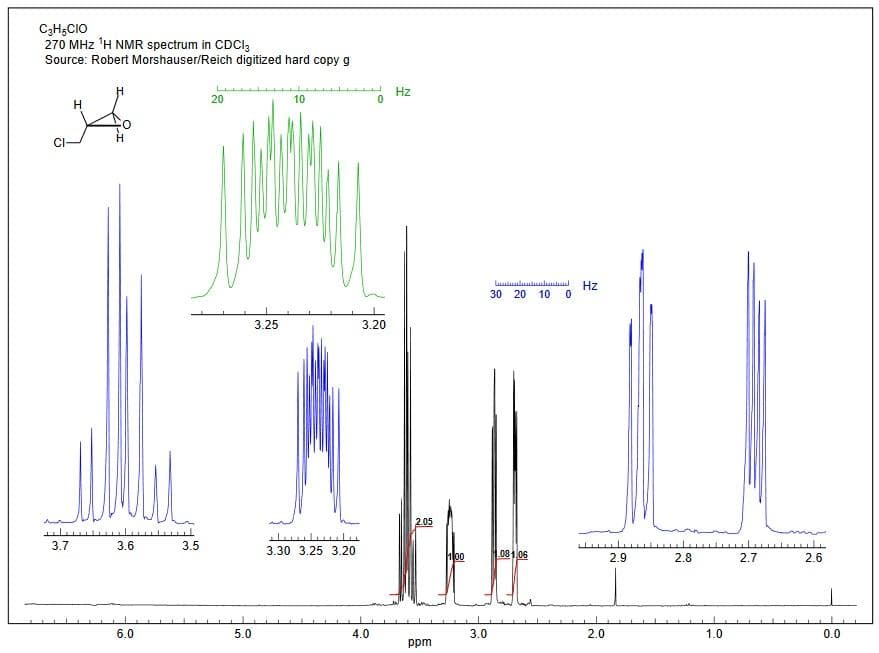The 1H NMR spectrum for the commonly employed reactant epichlorohydrin is shown below. Despite featuring only a few signals, this spectrum provides an interesting case of assignment through the use of multiplicities and coupling constants. Can you assign the signals and explain the observed differences in geminal coupling constants?
The 1H NMR spectrum for the commonly employed reactant epichlorohydrin is shown below. Despite featuring only a few signals, this spectrum provides an interesting case of assignment through the use of multiplicities and coupling constants. Can you assign the signals and explain the observed differences in geminal coupling constants?
Physical Chemistry
2nd Edition
ISBN:9781133958437
Author:Ball, David W. (david Warren), BAER, Tomas
Publisher:Ball, David W. (david Warren), BAER, Tomas
Chapter15: Introduction To Electronic Spectroscopy And Structure
Section: Chapter Questions
Problem 15.57E
Related questions
Question
The 1H NMR spectrum for the commonly employed reactant epichlorohydrin is shown below. Despite featuring only a few signals, this spectrum provides an interesting case of assignment through the use of multiplicities and coupling constants. Can you assign the signals and explain the observed differences in geminal coupling constants?

Transcribed Image Text:C3H;CIO
270 MHz 'H NMR spectrum in CDCI3
Source: Robert Morshauser/Reich digitized hard copy g
Hz
20
10
CI
Hz
30 20 10 0
3.25
3.20
2.05
3.7
3.6
3.5
3.30 3.25 3.20
100
L081.06
2.9
2.8
2.7
2.6
6.0
5.0
4.0
3.0
2.0
1.0
0.0
ppm
Expert Solution
This question has been solved!
Explore an expertly crafted, step-by-step solution for a thorough understanding of key concepts.
Step by step
Solved in 2 steps with 1 images

Knowledge Booster
Learn more about
Need a deep-dive on the concept behind this application? Look no further. Learn more about this topic, chemistry and related others by exploring similar questions and additional content below.Recommended textbooks for you

Physical Chemistry
Chemistry
ISBN:
9781133958437
Author:
Ball, David W. (david Warren), BAER, Tomas
Publisher:
Wadsworth Cengage Learning,

Physical Chemistry
Chemistry
ISBN:
9781133958437
Author:
Ball, David W. (david Warren), BAER, Tomas
Publisher:
Wadsworth Cengage Learning,